Premium Only Content

What Happens When War Is No Longer Covered in the Mainstream Media (1974)
The dark side of history: https://thememoryhole.substack.com/
This film delves into the overlooked suffering of the Vietnamese people, long after America's withdrawal of ground forces.
Set in 1974, amidst the declared 'peace,' the film unveils a stark reality: despite the absence of American soldiers, the war's impact lingers. The investigation uncovers a hidden truth—the continued presence of Pentagon personnel in Vietnam, disguised as civilians. Through interviews with pilots and Marines posing as contractors, the documentary exposes the ongoing toll of the conflict on Vietnamese civilians, shedding light on the unseen cost of war.
The narrative unfolds with raw accounts from individuals on the ground—a nurse at a Quaker hospital reveals that a staggering 65 percent of injuries are still war-related, predominantly affecting innocent children encountering unexploded mines. Meanwhile, an aid worker's testimony paints a grim picture of escalating hunger among refugees, echoing the grim aftermath that persists despite the supposed peace accords.
Airing at a time when mainstream media largely ignored Vietnam, this documentary defied the norm, bringing to the forefront the enduring anguish faced by the Vietnamese population. It set the stage for this distinct approach to reporting—highlighting underreported truths and challenging the prevailing narratives of conflict. Through powerful storytelling and unflinching portrayal, the film becomes a poignant reminder of the forgotten casualties and enduring scars of war.
1974 saw ongoing combat in South Vietnam despite the promises of the Paris Peace Accords. The impact of the 1973 oil crisis, reduced U.S. expenditure and the resignation of Richard Nixon in the wake of the Watergate scandal undermined the South Vietnamese economy and U.S. support for South Vietnam. The South Vietnamese were forced to reduce military operations to conserve fuel and ammunition, causing a decline in morale and moving the balance of military power in favor of the North Vietnamese.
January
19 January
The Battle of the Paracel Islands was an engagement fought between the naval forces of the People's Republic of China and South Vietnam in the Paracel Islands. The Republic of Vietnam Navy lost 75 killed and 48 captured and one Corvette sunk while the People's Liberation Army Navy lost 18 killed. As a result of the battle, the PRC established de facto control over the Paracels.[2]
25 January
After meetings with Defense Attaché Office (DAO) commander General John E. Murray, General Cao Văn Viên, chairman of the Joint General Staff and his head of logistics General Dong Van Khuyen ordered cuts to ammunition and fuel supplies for all units due to budgetary constraints.[3]: 57–8
February
12 February to 4 May
In the Battle of Tri Phap Army of the Republic of Vietnam (ARVN) forces launched an attack on a People's Army of Vietnam (PAVN) base at Tri Phap, Dinh Tuong Province.[4]: 67–96
March
27 March to 2 May
The Battle of Svay Rieng was the last major operation of the war to be mounted by the ARVN against the PAVN. The battle resulted in over 1,200 PAVN killed and 65 captured for ARVN losses of less than 100 killed.[4]: 93–5
April
1-10 April
Chí Linh Camp defended by the 215th Regional Force Company with a platoon of two 105 mm howitzers was attacked by the PAVN 7th Division, quickly damaging the two howitzers and destroying the ammunition dump. On 5 April the PAVN 3rd Battalion, 141st Regiment, with the division's 28th Sapper and 22d Artillery Battalion supporting, overran the base. By 10 April, about half of the defenders and 20 dependents had straggled into Đồng Xoài or Chơn Thành Camp to the west. The rest, about 50 men, remained unaccounted for. With the elimination of Chí Linh, the PAVN 7th Division enjoyed unimpeded movement along Highway 14 between Chơn Thành and Đồng Xoài.[4]: 76
4 April
The Provisional Government of National Union (PGNU) was formed in Laos.
May
6 May
Associated Press photographer Slava "Sal" Veder wins the Pulitzer Prize for Feature Photography for his photo Burst of Joy.[5]
15 May
United States Air Force (USAF) EC-47 Airborne Radio Direction Finding missions, flown continuously since 1966, were discontinued and the responsibility for this task was assumed by the 7th Radio Research Field Station at Ramasun Station, Udon Thani Province, Thailand.[6]: 64
16 May to 20 November
The Battle of the Iron Triangle began on 16 May, when the PAVN 9th Division backed by a small contingent of tanks launched an attack on Rach Bap, took possession of An Dien and pushed south towards Phu Cuong. The ARVN counterattacked in mid-November and by 20 November had recaptured Rach Bap.[4]: 99–105
June
1 June
General Murray sent a cable to The Pentagon criticising reductions in military aid saying that "you can roughly equate cuts in support to loss of real estate" and that as aid decreased South Vietnam would be forced to retreat to a rump state based on Saigon and the Mekong Delta. Murray advised that South Vietnam needed a minimum aid level of US$1.126 billion, but even this would not replace lost and damaged equipment, with aid of US$900 million military capacity would decline after mid-1975, with aid at US$750 million South Vietnam would be unable to stop a major attack, while at US$600 million the US should "write off South Vietnam as a bad investment and broken promise."[3]: 59
3 June
The PAVN hit Bien Hoa Air Base with at least 40 122 mm rockets doing minor damage to runways and destroying 500 Napalm canisters, but without damaging any aircraft. Other rockets exploded in hamlets surrounding the base, killing and wounding civilians.[4]: 107
July
1 July
U.S. aid to South Vietnam is reduced from $1.1 billion in fiscal year 1974 (July 1973-June 1974) to $750 million in fiscal year 1975 (July 1974-June 1975).[7]
18 July to 4 October
The Battle of Duc Duc begins with the PAVN attacking ARVN outposts near Duc Duc, Quảng Nam Province. The ARVN 3rd Division would suffer 4,700 men casualties in the battle.[4]: 113–21
18 July to 3 November
The Battle of Thượng Đức began when a regiment of the PAVN 324th Division overran the An Hoa Industrial Complex and then attacked the town of Thượng Ðức 40 km southwest of Danang. The costly battle would result in a Pyrrhic victory for the ARVN.
August
6 August
A report of the Senate Foreign Relations Committee based on a visit to South Vietnam from 12 May to 4 June criticized the U.S. Embassy as being too close to the Saigon government. The report was very pessimistic about South Vietnam's future saying that unless outside powers applied strong pressure, the South Vietnamese Government and the Communists would fail to reach a political settlement. It also questioned the benefits of the US$750 million aid request.[8]
9 August
Richard Nixon leaves the White House after resigning as President
U.S. President Richard Nixon resigned due to the Watergate Scandal. He was succeeded as president by Vice President Gerald Ford.
28 August to 10 December
The Battle of Phú Lộc began as PAVN captured a series of hills in Phú Lộc District and installed artillery that closed Phu Bai Air Base and interdicted Highway 1. The hills were recaptured by the ARVN in costly fighting that depleted its reserve forces.[4]: 129–31
In a debriefing meeting with CINCPAC Admiral Noel Gayler in Hawaii at the end of his time as commander of the DAO, General Murray warned of the devastating impact of the aid cuts and Thiệu's misplaced confidence that aid would be restored. Murray warned that "without proper support, the [South Vietnamese] are going to lose, maybe not next week, or next month, but after the year they are going to."[3]: 82
September
12 September
The USAF completed its withdrawal from Takhli Royal Thai Air Force Base, handing the base back to the Royal Thai Air Force.[6]: 68
15 September
A hijacker took control of an Air Vietnam Boeing 727-121C on a flight from Da Nang to Saigon and demanded to be flown to Hanoi. The crew attempted to land at Phan Rang Air Base, overshot the landing and then crashed while turning to make another approach killing all 75 onboard.[9]
26 September
BirdAir began operating supply flights from U-Tapao Royal Thai Navy Airfield to Phnom Penh using unmarked USAF supported C-130s crewed by civilians.[6]: 62
October
10 October
Saigon Police attacked about 300 Vietnamese journalists and 1,000 supporters protesting against censorship under Press Law 007.[10]
31 October
75 civilians and policemen are injured in Saigon in anti-corruption protests led by Reverend Tran Huu Thanh, a Catholic priest.[11]
November
1 November
The USAF placed Ubon Royal Thai Air Force Base on standby status with 350 U.S. personnel remaining to maintain the facilities and provide initial capability to receive units back at the base if required.[6]: 68
December
From July 1965 to the end of 1974, some 6,500 officers and generals, as well as more than 4,500 soldiers and sergeants of the Soviet Armed Forces participated in the war.[12]
Soviet military advisers to the PAVN 238th Anti-aircraft Missile Regiment in 1968
13 December to 6 January 1975
The Battle of Phuoc Long began in Phuoc Long Province, about 100 km (62 mi) from Saigon. The campaign against Phuoc Long reflected North Vietnam's change in policy after the strategic raids of 1974, taking full advantage of South Vietnam's critical military situation.
14 December
On or about this date the Pathet Lao executed Charles Dean and Neil Sharman, backpackers who were captured southeast of Vientiane on 4 September.[13]
18 December to 8 January 1975
North Vietnamese political and military leaders held a strategy planning conference attended in part by Soviet General Viktor Kulikov.[6]: 83
December to 6 January 1975
The 80-man 3rd Company, 314th Regional Force Battalion guarding the radio relay station on the summit of Nui Ba Den began receiving attacks of increasing intensity and frequency. PAVN assaults on Nui Ba Den continued throughout December 1974, but the RF Company held on. RVNAF efforts to resupply the troops on Nui Ba Den were largely unsuccessful. Helicopters were driven off by heavy fire, and fighter-bombers were forced to excessive altitudes by SA-7 missiles and antiaircraft artillery. One F-5A fighter-bomber was shot down by an SA-7 on 14 December. Finally on 6 January 1975, without food and water and with nearly all ammunition expended, the company picked up its wounded and withdrew down the mountain to friendly lines.[4]: 135–6
Year in numbers
Armed Force KIA Reference Military costs – 1974 Military costs in 2023 US$ Reference
South Vietnam
North Vietnam
References
Wikimedia Commons has media related to Vietnam War in 1974.
Young, Marilyn (1991). "14". The Vietnam Wars 1945-1990. ISBN 9780060921071.
Hickey, Dennis (2001). The armies of East Asia: China, Taiwan, Japan and the Koreas. Lynne Rienner Publishers. p. 21. ISBN 1-555879926.
Veith, George (2012). Black April The Fall of South Vietnam 1973–75. Encounter Books. ISBN 9781594035722.
Le Gro, William (1985). Vietnam from ceasefire to capitulation (PDF). US Army Center of Military History. ISBN 9781410225429.Public Domain This article incorporates text from this source, which is in the public domain.
"Slava Veder of Associated Press". Pulitzer.org. Retrieved 12 July 2020.
Hartsook, E.H. (1975). The Air Force in Southeast Asia The end of U.S. involvement 1973 - 1975 (PDF). Office of Air Force History. ISBN 9781780396521.Public Domain This article incorporates text from this source, which is in the public domain.
Dunham, George; Quinlan, David (1990). U.S. Marines in Vietnam: The Bitter End, 1973–1975 (PDF). History and Museums Division, Headquarters, United States Marine Corps. p. 294. ISBN 978-0-16-026455-9.Public Domain This article incorporates text from this source, which is in the public domain.
"Report criticizes embassy in Saigon". The New York Times. 6 August 2014.
"Aircraft accident Boeing 727-121C". Aviation Safety network. Retrieved 20 August 2020.
David Shipler (10 October 1974). "Saigon Police Attack During a Censorship Protest". The New York Times.
David Shipler (8 November 1974). "Demonstrators in Saigon Alter Their Tactics and Maneuver Silently". The New York Times.
(in Russian): "Soviet rocketeer: After our arrival in Vietnam, American pilots refused to fly". rus.ruvr.ru. January 29, 2010. Retrieved May 26, 2010.
"Pentagon Recovers Remains Believed to Be Howard Dean's Brother". Fox News. AP. 18 November 2003. Retrieved 5 September 2020.
The Paris Peace Accords, (Vietnamese: Hiệp định Paris về Việt Nam), officially the Agreement on Ending the War and Restoring Peace in Viet Nam (Hiệp định về chấm dứt chiến tranh, lập lại hòa bình ở Việt Nam), was a peace agreement signed on January 27, 1973, to establish peace in Vietnam and end the Vietnam War. The agreement was signed by the governments of the Democratic Republic of Vietnam (North Vietnam); the Republic of Vietnam (South Vietnam); the United States; and the Provisional Revolutionary Government of the Republic of South Vietnam (PRG), which represented South Vietnamese communists.[1] US ground forces had begun to withdraw from Vietnam in 1969, and had suffered from deteriorating morale during the withdrawal. By the beginning of 1972 those that remained had very little involvement in combat. The last American infantry battalions withdrew in August 1972.[2] Most air and naval forces, and most advisers, also were gone from South Vietnam by that time, though air and naval forces not based in South Vietnam were still playing a large role in the war. The Paris Agreement removed the remaining US forces. Direct U.S. military intervention was ended, and fighting between the three remaining powers temporarily stopped for less than a day. The agreement was not ratified by the U.S. Senate.[3][4]
The negotiations that led to the accord began in 1968, after various lengthy delays. As a result of the accord, the International Control Commission (ICC) was replaced by the International Commission of Control and Supervision (ICCS), which consisted of Canada, Poland, Hungary, and Indonesia, to monitor the agreement.[5] The main negotiators of the agreement were U.S. National Security Advisor Henry Kissinger and the North Vietnamese Politburo member Lê Đức Thọ. Both men were awarded the 1973 Nobel Peace Prize for their efforts, but Lê Đức Thọ refused to accept it.
The agreement's provisions were immediately and frequently broken by both North and South Vietnamese forces with no official response from the United States. Open fighting broke out in March 1973, and North Vietnamese offensives enlarged their territory by the end of the year. Two years later, a massive North Vietnamese offensive conquered South Vietnam on April 30, 1975, and the two countries, which had been separated since 1954, united once more on July 2, 1976, as the Socialist Republic of Vietnam.[1]
Part of the negotiations took place in the former residence of the French painter Fernand Léger; it was bequeathed to the French Communist Party. Ironically, the street of the house was named after Philippe Leclerc de Hauteclocque, who had commanded French forces in Vietnam after the Second World War.[6]
Provisions of the accords
The approximate areas of control at the time of the signing of the Accord. The South Vietnamese government controlled about 80 percent of the territory and 90 percent of the population, although many areas were contested.
The agreement called for:
The withdrawal of all U.S. and allied forces within sixty days.
The return of prisoners of war parallel to the above.
The clearing of mines from North Vietnamese ports by the U.S.
A cease-fire in place in South Vietnam followed by precise delineations of communist and government zones of control.
The establishment of a “National Council of National Reconciliation and Concord” composed of a communist, government, and neutralist side to ensure democratic liberties and organize free elections in South Vietnam.
The reunification of Vietnam through peaceful means without coercion or annexation by either party, and without foreign interference.
The establishment of “Joint Military Commissions” composed of the four parties and an “International Commission of Control and Supervision” composed of Canada, Hungary, Indonesia, and Poland to implement the cease-fire. Both operate by unanimity.
The withdrawal of foreign troops from Laos and Cambodia.
A ban on the introduction of war material in South Vietnam unless on a replacement basis.
A ban on introducing further military personnel into South Vietnam.
U.S. financial contributions to “healing the wounds of war” throughout Indochina.
Paris peace negotiations
This section needs additional citations for verification. Please help improve this article by adding citations to reliable sources in this section. Unsourced material may be challenged and removed. (October 2023) (Learn how and when to remove this template message)
Early deadlocks
Duration: 10 minutes and 40 seconds.10:40
1971 newsreel about the peace talks
Following the strong showing of anti-war candidate Eugene McCarthy in the New Hampshire primary, in March 1968 U.S President Lyndon B. Johnson halted bombing operations over the northern portion of North Vietnam (Operation Rolling Thunder), in order to encourage Hanoi (the perceived locus of the insurgency) to begin negotiations. Although some sources state that the bombing halt decision announced on March 31, 1968, was related to events occurring within the White House and the Presidents counsel of Secretary of Defense Clark Clifford and others rather than the events in New Hampshire.[7] Shortly thereafter, Hanoi agreed to discuss a complete halt of the bombing, and a date was set for representatives of both parties to meet in Paris. The sides first met on May 10, with the delegations headed by Xuân Thuỷ, who would remain the official leader of the North Vietnamese delegation throughout the process, and U.S. ambassador-at-large W. Averell Harriman.
For five months, the negotiations stalled as North Vietnam demanded that all bombing of North Vietnam be stopped, while the U.S. side demanded that North Vietnam agree to a reciprocal de-escalation in South Vietnam; it was not until October 31 that Johnson agreed to end the air strikes and serious negotiations could begin.
One of the largest hurdles to effective negotiation was the fact that North Vietnam and the National Front for the Liberation of South Vietnam (NLF, or Viet Cong) in the South, refused to recognize the government of South Vietnam; with equal persistence, the government in Saigon refused to acknowledge the legitimacy of the NLF. Harriman resolved this dispute by developing a system by which North Vietnam and U.S. would be the named parties; NLF officials could join the North Vietnam team without being recognized by South Vietnam, while Saigon's representatives joined their U.S. allies.
A similar debate concerned the shape of the table to be used at the conference. The North favored a circular table, in which all parties, including NLF representatives, would appear to be "equal"' in importance. The South Vietnamese argued that only a rectangular table was acceptable, for only a rectangle could show two distinct sides to the conflict. Eventually a compromise was reached, in which representatives of the northern and southern governments would sit at a circular table, with members representing all other parties sitting at individual square tables around them.[8]
Negotiations and the Nixon campaign
Bryce Harlow, a former White House staff member in the Eisenhower administration, claimed to have "a double agent working in the White House....I kept Nixon informed." Harlow and Henry Kissinger (who was friendly with both campaigns and guaranteed a job in either a Humphrey or Nixon administration in the upcoming election) separately predicted Johnson's "bombing halt". Democratic senator George Smathers informed President Johnson that "the word is out that we are making an effort to throw the election to Humphrey. Nixon has been told of it".[9]
According to presidential historian Robert Dallek, Kissinger's advice "rested not on special knowledge of decision making at the White House but on an astute analyst's insight into what was happening." CIA intelligence analyst William Bundy stated that Kissinger obtained "no useful inside information" from his trip to Paris, and "almost any experienced Hanoi watcher might have come to the same conclusion". While Kissinger may have "hinted that his advice was based on contacts with the Paris delegation," this sort of "self-promotion...is at worst a minor and not uncommon practice, quite different from getting and reporting real secrets."[9]
Nixon asked prominent Chinese-American politician Anna Chennault to be his "channel to Mr. Thieu"; Chennault agreed and periodically reported to John Mitchell that Thieu had no intention of attending a peace conference. On November 2, Chennault informed the South Vietnamese ambassador: "I have just heard from my boss in Albuquerque who says his boss [Nixon] is going to win. And you tell your boss [Thieu] to hold on a while longer."[10] Johnson found out through the NSA and was enraged saying that Nixon had "blood on his hands" and that Senate Minority Leader Everett Dirksen agreed with Johnson that such action was "treason."[11][12][13] Defense Secretary Clark Clifford considered the moves an illegal violation of the Logan Act.[14]
In response, President Johnson ordered the wire-tapping of members of the Nixon campaign.[15][16] Dallek wrote that Nixon's efforts "probably made no difference" because Thieu was unwilling to attend the talks and there was little chance of an agreement being reached before the election; however, his use of information provided by Harlow and Kissinger was morally questionable, and vice president Hubert Humphrey's decision not to make Nixon's actions public was "an uncommon act of political decency."[17]
Nixon government
After winning the 1968 presidential election, Richard Nixon became president of the U.S. in January 1969. He then replaced U.S. ambassador Harriman with Henry Cabot Lodge Jr., who was later replaced by David Bruce. Also that year, the NLF set up a Provisional Revolutionary Government (PRG) to gain government status at the talks. However, the primary negotiations that led to the agreement did not occur at the Peace Conference at all but were carried out during secret negotiations between Kissinger and Lê Đức Thọ, which began on August 4, 1969.
North Vietnam insisted for three years that the agreement could not be concluded unless the United States agreed to remove South Vietnamese President Nguyễn Văn Thiệu from power and replace him with someone more acceptable to Hanoi. Nixon and Kissinger were unwilling to sign an agreement to overthrow a government the NLF had failed to overthrow by force of arms, though the extent of North Vietnamese demands is contested. Historian Marilyn B. Young, contends that the contents of Hanoi's proposal were systematically distorted from their original plea to permit Thiệu's replacement, to what Kissinger propagated as a demand for his overthrow.[18]
Breakthrough and agreement
On May 8, 1972, President Nixon made a major concession to North Vietnam by announcing that the U.S. would accept a cease-fire in place as a precondition for its military withdrawal. In other words, the U.S. would withdraw its forces from South Vietnam without North Vietnam doing the same. The concession broke a deadlock and resulted in progress in the talks over the next few months.[19]
The final major breakthrough came on October 8, 1972. Prior to this, North Vietnam had been disappointed by the results of its Nguyen Hue Offensive (known in the West as the Easter Offensive), which had resulted in the United States countering with "Operation Linebacker," a significant air bombing campaign that blunted the North's drive in the South as well as inflicting damage in the North. Also, they feared increased isolation if Nixon's efforts at détente significantly improved U.S. relations with the chief communist powers, the Soviet Union and the People's Republic of China, who were backing the North Vietnamese military effort. In a meeting with Kissinger, Thọ significantly modified his bargaining line, allowing that the Saigon government could remain in power and that negotiations between the two South Vietnamese parties could develop a final settlement. Within 10 days the secret talks drew up a final draft. Kissinger held a press conference in Washington during which he announced that "peace is at hand."
Signing the peace accords
When Thiệu, who had not even been informed of the secret negotiations, was presented with the draft of the new agreement, he was furious with Kissinger and Nixon (who were perfectly aware of South Vietnam's negotiating position) and refused to accept it without significant changes. He then made several public radio addresses, claiming that the proposed agreement was worse than it actually was. Hanoi was flabbergasted, believing that it had been duped into a propaganda ploy by Kissinger. On October 26, Radio Hanoi broadcast key details of the draft agreement.
However, as U.S. casualties had mounted throughout the conflict since 1965, American domestic support for the war had deteriorated, and by the fall of 1972 there was major pressure on the Nixon administration to withdraw from the war. Consequently, the U.S. brought great diplomatic pressure upon their South Vietnamese ally to sign the agreement even if the concessions Thiệu wanted could not be achieved. Nixon pledged to provide continued substantial aid to South Vietnam, and given his recent landslide victory in the presidential election, it seemed possible that he would be able to follow through on that pledge. To demonstrate his seriousness to Thiệu, Nixon ordered the heavy Operation Linebacker II bombings of North Vietnam in December 1972. Nixon also attempted to bolster South Vietnam's military forces by ordering that large quantities of U.S. military material and equipment be given to South Vietnam from May to December 1972 under Operations Enhance and Enhance Plus.[20] These operations were also designed to keep North Vietnam at the negotiating table and to prevent them from abandoning negotiations and seeking total victory. When the North Vietnamese government agreed to resume "technical" discussions with the United States, Nixon ordered a halt to bombings north of the 20th parallel on December 30. With the U.S. committed to disengagement (and after threats from Nixon that South Vietnam would be abandoned if he did not agree),[21] Thiệu had little choice but to accede.
On January 15, 1973, President Nixon announced a suspension of offensive actions against North Vietnam. Kissinger and Thọ met again on January 23 and signed off on an agreement that was basically identical to the draft of three months earlier. The agreement was signed by the leaders of the official delegations on January 27, 1973, at the Hotel Majestic in Paris.
Aftermath
This section needs additional citations for verification. Please help improve this article by adding citations to reliable sources in this section. Unsourced material may be challenged and removed. (August 2018) (Learn how and when to remove this template message)
Balance of military forces (January 1973)[22] South Vietnamese armed forces
Ground combat regulars 210,000
Regional and Popular Force militias 510,000
Service troops 200,000
Total 920,000
Communist armed forces
North Vietnamese ground troops in South Vietnam 123,000
Viet Cong ground troops 25,000
Service troops 71,000
Total 219,000
PAVN prisoners released, Thạch Hãn River, 24 February 1973
210 prisoners from the Bien Hoa POW Camp refuse repatriation and want to remain in South Vietnam sit with signs at Bien Hoa Air Base, 25 March
The Paris Peace Accords effectively removed the U.S. from the conflict in Vietnam. Prisoners from both sides were exchanged, with American ones primarily released during Operation Homecoming. Around 31,961 North Vietnamese/VC prisoners (26,880 military, 5,081 civilians) were released in return for 5,942 South Vietnamese prisoners.[23] However, the agreement's provisions were routinely flouted by both the North Vietnamese and the South Vietnamese government, eliciting no response from the United States, and ultimately resulting in the communists enlarging the area under their control by the end of 1973. North Vietnamese military forces gradually built up their military infrastructure in the areas they controlled and two years later were in a position to launch the successful offensive that ended South Vietnam's status as an independent country. Fighting began almost immediately after the agreement was signed, due to a series of mutual retaliations, and by March 1973, full-fledged war had resumed.[24]
Nixon had secretly promised Thiệu that he would use airpower to support the South Vietnamese government should it be necessary. During his confirmation hearings in June 1973, Secretary of Defense James Schlesinger was sharply criticized by some senators after he stated that he would recommend resumption of U.S. bombing in North Vietnam if North Vietnam launched a major offensive against South Vietnam, but by August 15, 1973, 95% of American troops and their allies had left Vietnam (both North and South) as well as Cambodia and Laos under the Case-Church Amendment. The amendment, which was approved by the U.S. Congress in June 1973, prohibited further U.S. military activity in Vietnam, Laos and Cambodia unless the president secured Congressional approval in advance. However, during this time, Nixon was being driven from office due to the Watergate scandal, which led to his resignation in 1974. When the North Vietnamese began their final offensive early in 1975, the U.S. Congress refused to appropriate increased military assistance for South Vietnam, citing strong opposition to the war by Americans and the loss of American equipment to the North by retreating Southern forces. Thiệu subsequently resigned, accusing the U.S. of betrayal in a TV and radio address:
At the time of the peace agreement the United States agreed to only replace equipment on a one-by-one basis. But the United States did not keep its word. Is an American's word reliable these days? The United States did not keep its promise to help us fight for freedom and it was in the same fight that the United States lost 50,000 of its young men.[25]
Saigon fell to the North Vietnamese army supported by Viet Cong units on April 30, 1975. Schlesinger had announced early in the morning of April 29 the beginning of Operation Frequent Wind, which entailed the evacuation of the last U.S. diplomatic, military and civilian personnel from Saigon via helicopter, which was completed in the early morning hours of April 30. Not only did North Vietnam conquer South Vietnam, but the communists were also victorious in Cambodia when the Khmer Rouge captured Phnom Penh on April 17, as were the Pathet Lao in Laos successful in capturing Vientiane on December 2. Like Saigon, U.S. civilian and military personnel were evacuated from Phnom Penh, U.S. diplomatic presence in Vientiane was significantly downgraded, and the number of remaining U.S. personnel was severely reduced.
Assessment
According to Finnish historian Jussi Hanhimäki, due to triangular diplomacy which isolated it, South Vietnam was "pressurized into accepting an agreement that virtually ensured its collapse".[26] During negotiations, Kissinger stated that the United States would not intervene militarily 18 months after an agreement, but that it might intervene before that. In Vietnam War historiography, this has been termed the "decent interval".[27]
Signatories
North Vietnam Nguyen Duy Trinh, Minister for Foreign Affairs for the Democratic Republic of Vietnam
Nguyễn Thị Bình, Minister for Foreign Affairs for the Provisional Revolutionary Government of the Republic of South Vietnam
United States William P. Rogers, United States Secretary of State
South Vietnam Trần Văn Lắm, Minister for Foreign Affairs for the Republic of Vietnam
Other key figures in the negotiations
United States Henry Cabot Lodge Jr., former United States Ambassador to South Vietnam, head of the U.S. delegation
United States Henry Kissinger, special advisor of the President of the United States of America
United States William J. Porter
North Vietnam Xuân Thủy, head of delegation of the Democratic Republic of Vietnam
North Vietnam Lê Đức Thọ, special advisor of the government of Democratic Republic of Vietnam
Thích Nhất Hạnh, a Buddhist monk and peace activist living in exile in France
Portal:
flag Vietnam
References
Ward & Burns 2017, pp. 508–513.
Stanton, Shelby L. (2007-12-18). The Rise and Fall of an American Army: U.S. Ground Forces in Vietnam, 1963-1973. Random House Publishing Group. pp. 358–362. ISBN 9780307417343.
The Paris Agreement on Vietnam: Twenty-five Years Later Archived 2019-09-01 at the Wayback Machine Conference Transcript, The Nixon Center, Washington, DC, April 1998. Reproduced on mtholyoke.edu. Accessed 5 September 2012.
The Constitution - Executive agreements Accessed 29 July 2014.
Rhéaume, Charles (30 July 2010). "Cautious neighbour policy: Canada's helping hand in winding down the Vietnam War". Cold War History. 11 (2): 223–239. doi:10.1080/14682740903527684. S2CID 154387299. Retrieved 23 February 2023.
Breakthrough in Paris Blocked in Saigon, October 8–23, 1972 Retrieved December 11, 2021
"Bombing halt - The Vietnam War and Its Impact". www.americanforeignrelations.com.
Zubeida, Mustafa (1969). "THE PARIS PEACE TALKS". Pakistan Horizon. 22 (1): 32. Retrieved 1 October 2023.
Robert Dallek (2007), Nixon and Kissinger: Partners in Power, HarperCollins, pp. 73-74.
Dallek, pp. 74-75. In 1997, Chennault admitted that "I was constantly in touch with Nixon and Mitchell."
Mark Lisheron. "In tapes, LBJ accuses Nixon of treason" Archived 2008-12-08 at the Wayback Machine. Austin American-Statesman. December 5, 2008. "Johnson tells Sen. Everett Dirksen, the Republican minority leader, that it will be Nixon's responsibility if the South Vietnamese don't participate in the peace talks. 'This is treason,' LBJ says to Dirksen."
Robert "KC" Johnson. "Did Nixon Commit Treason in 1968? What The New LBJ Tapes Reveal". History News Network, January 26, 2009. Transcript from audio recording on YouTube of President Johnson: "This is treason." "I know."
Thomas Powers. "The Man who Kept the Secrets: Richard Helms & the CIA". Alfred A. Knopf, 1979, p.198. "during the week which ended Sunday, October 27 [1968], the National Security Agency intercepted a radio message from the South Vietnamese Embassy to Saigon explicitly urging (Nguyen Van) Thieu to stand fast against an agreement until after the election. As soon as Johnson learned of the cable he ordered the FBI to place Madame (Anna) Chennault under surveillance and to install a phone tap on the South Vietnamese Embassy"
Clark M. Clifford (1991). Counsel to the President: A Memoir (May 21, 1991 ed.). Random House. p. 709. ISBN 978-0-394-56995-6. p. 582. "The activities of the Nixon team went far beyond the bounds of justifiable political combat. It constituted direct interference in the activities of the executive branch and the responsibilities of the Chief Executive, the only people with authority to negotiate on behalf of the nation. The activities of the Nixon campaign constituted a gross, even potentially illegal, interference in the security affairs of the nation by private individuals."
Dallek, p. 75.
Taylor, David The Lyndon Johnson tapes: Richard Nixon's 'treason' BBC News Magazine 22 March 2013 Last retrieved 22 March 2013
Dallek, pp. 77-78.
Marilyn Young (1994) The Vietnam Wars: 1945–1990, HarperPerennial, pp.263-264.
"Memoirs v Tapes: President Nixon and the December Bombings". accessed 23 Jun 2015
Isaacs, Arnold R. (1983), Without Honor: Defeat in Vietnam and Cambodia, Baltimore: The Johns Hopkins University Press, p. 48-49, 511
"Việt Nam - Nixon ép Sài Gòn ký hòa đàm 1973". BBC. 24 June 2009. Retrieved 27 December 2015.
Le Gro, Col. William E. (1985), Vietnam from Cease-Fire to Capitulation, US Army Center of Military History, Department of the Army, p. 28
"Vietnamese Complete P.O.W. Exchange". The New York Times. 9 March 1974.
Ward & Burns 2017, p. [page needed].
"1975: Vietnam's President Thieu resigns". On this day. BBC News. April 21, 1975.
Hanhimäki, Jussi (2003). "Selling the 'Decent interval': Kissinger, triangular diplomacy, and the end of the Vietnam war, 1971-73". Diplomacy & Statecraft. 14 (1): 159–194. doi:10.1080/09592290412331308771. S2CID 218523033.
Hughes, Ken (2015). Fatal Politics: The Nixon Tapes, the Vietnam War, and the Casualties of Reelection. University of Virginia Press. p. 120. ISBN 978-0-8139-3803-5.
“Les Accords de Paris, quarante ans plus tard, un film de Rina Sherman” Archived 2019-07-14 at the Wayback Machine documentary by Rina Sherman (HD, 71 min).
Ward, Geoffrey C.; Burns, Ken (2017). The Vietnam War: An Intimate History. Knopf Doubleday Publishing Group. ISBN 9781524733100.
Further reading
Herrington, Stuart A. (1983). "Peace with Honor? An American Reports on Vietnam" Presidio Press. Part II, "Life Under The Paris Agreement" pp. 16–40.
Herschensohn, Bruce (2010). An American Amnesia: How the U.S. Congress Forced the Surrenders of South Vietnam and Cambodia. New York: Beaufort Books. ISBN 978-0-8253-0632-7.
-
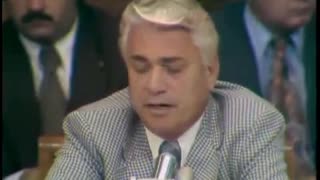 6:37:17
6:37:17
The Memory Hole
9 months agoNixon Impeachment Hearings Day 6 (1974-07-29)
1.41K2 -
 LIVE
LIVE
The Jimmy Dore Show
1 hour agoEpstein Files Vote Goes To Trump’s Desk! Trump Smears Khashoggi While Hosting Saudi Crown Prince!
4,425 watching -
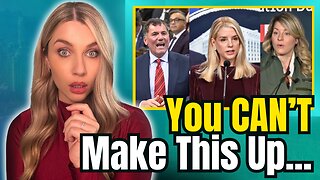 21:34
21:34
Jasmin Laine
3 hours agoBREAKING: Trump Just HUMILIATED Canada on Live TV—Ottawa in FULL PANIC
5.75K5 -
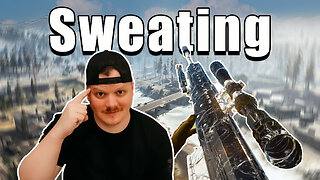 LIVE
LIVE
GritsGG
4 hours ago#1 Most Warzone Wins 4015+!
55 watching -
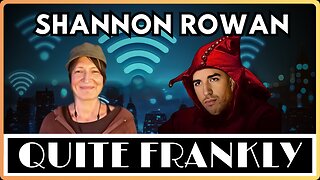 LIVE
LIVE
Quite Frankly
6 hours agoEMF Sensitivity, Epstein Censure FAIL, More! | Shannon Rowan, Mike Baldwin 11/19/25
407 watching -
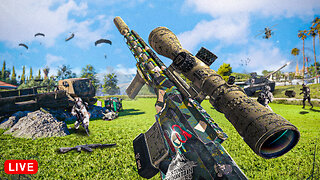 LIVE
LIVE
StoneMountain64
4 hours agoBattlefield 6 BIG UPDATE! Fixes, New Maps, and I AM BACK BOYS
67 watching -
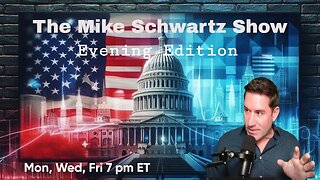 LIVE
LIVE
The Mike Schwartz Show
4 hours agoTHE MIKE SCHWARTZ SHOW Evening Edition 11-19-2025
3,436 watching -
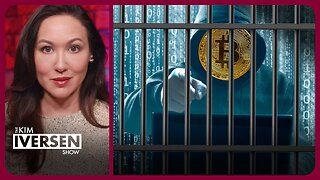 1:25:42
1:25:42
Kim Iversen
3 hours agoHe Built a Privacy App — Now He’s Going to Prison | Keonne Rodriguez
80.7K74 -
 LIVE
LIVE
NellieBean
3 hours ago🔴 SIMS 4 LIVE - with NellieBean
52 watching -
 LIVE
LIVE
Shield_PR_Gaming
2 hours ago11/19/25 I Let's meet Where Winds Meet! ON RUMBLE.COM!
27 watching